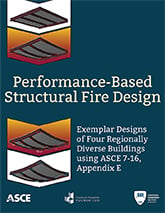The software SAFIR is widely used in structural fire engineering, by researchers as well as by design offices for real construction projects.
A Global Presence
Licenses of SAFIR have been sold in 43 countries throughout the world, to more than 150 research centers and universities and 150 companies. More than 1000 complementary copies of a limited version have been distributed, either for evaluation or for use in masters or PhD programs.

Use in Academic Programs
SAFIR is used as a tool in the academic programs, among other(*), at:
- Algeria: Univ. Batna 2
- Australia : Univ. of Queensland
- Belgium : Hasselt Univ., Liege Univ., Gent Univ.
- Czech Republic : Czech Technical Univ. in Prague
- India: CSIR-SERC
- Italy : Univ. of Trento
- Morocco : Univ. Abdelmalek Essaadi
- Poland : Warsaw Fire Univ.
- Republic of Korea : Kangwon National Univ.
- Romania : Polytech. Univ. of Timisoara
- Sweden : Lulea Univ. of Technology
- USA : Johns Hopkins University, Buffalo State University
(*) Please contact us if you want your institution to be added to this list.
Examples of Projects
Post-fire investigation of the New Zealand International Convention Center building – Holmes
Holmes used SAFIR to analyze the entire roof structure of the NZICC building after the 2019 fire. As described on their company webpage, “The structural fire analysis involved modelling a travelling fire on the roof based on the mapping of the fire locations based on a full time-lapse video footage. (..) The analyses were able to predict the deformations and deflections consistently with those observed and measured on site after the fire. (..) As a result of the analysis and proof load tests, most of the steel structure for the roof could be retained and re-used for the reinstatement of the building, thus omitting the need to re-fabricate significant amount of structural steel for the roof.”


Four Pancras Square in London, UK – Trenton Fire
SAFIR was used for the fire design of the outside weathering steel frame. Performance based fire engineering was essential to enable this architectural design.
“(..) a successful example of where early fire engineering engagement has helped deliver an iconic design. (..) To allow the weathering steel to develop its protective patina and achieve the desired aesthetic, it must be left untreated and exposed; this is in conflict with traditional fire resistance solutions.“
From: Hopkin D., et al. “A structural fire strategy for an exposed weathering steel-framed building.” The Structural Engineer: journal of the Institution of Structural Engineer 96.1 (2018): 60-66.
Japan Tobacco headquarter in Geneva, Switzerland – INGENI
SAFIR was used for the structural fire engineering analysis of the JTI Building designed by SOM. The company INGENI carried out advanced natural fire simulations for the composite steel-reinforced concrete structure of the JTI Building, which led to a significant reduction in the fireproofing of the steel floor framing.
From: Lelli, L., & Loutan, J. (2018). “Advanced analyses of the membrane action of composite slabs under natural fire scenarios: A case study of the JTI headquarters“. Journal of Structural Fire Engineering, 9(1), 77-90.

Paris 2024 aquatic center
SAFIR was used by the French company Efectis to analyze the fire response of the timber roof structure of the Paris 2024 aquatic center.
Wilsdorf bridge in Geneva, Switzerland – MP Ingenieurs Conseils
SAFIR was used to analyze the fire response of the bridge under a truck fire scenario modeled with FDS.
From: Tonicello E., et al. “Fire analysis of a new steel bridge.” Proc. of the 7th International Conference on Structures in Fire. ETH Zürich, 2012.

Use in Reference Documents

ASCE/SEI Report on “Performance-Based Structural Fire Design”
The software SAFIR has been used in the report prepared by the Structural Engineering Institute (SEI) of the American Society of Civil Engineers on “Performance-Based Structural Fire Design: Exemplar Designs of Four Regionally Diverse Buildings using ASCE 7-16, Appendix E”. Three of the four companies involved in the study used SAFIR for their structural fire analyses.
fib bulletin No. 108 on “Performance-based fire design of concrete structures”
The software SAFIR is used throughout this bulletin published by the International Federation for Structural Concrete (fib). The bulletin provides guidelines on the use of performance-based methods for designing and assessing concrete structures in fire. A large section is dedicated to the use of advanced analysis (by numerical modeling) to support performance-based fire design.
